COPYRIGHT, PLEASE NOTE
Saturday, June 4, 2011
A panorama mosaic from the IC1396 to Sharpless 129
- IC 1396, http://astroanarchy.blogspot.com/2011/01/ic-1396-reprocessed.html
- Sharpless 129, http://astroanarchy.blogspot.com/2008/03/sh2-129.html
- some data from newer image of Sh2-129, http://astroanarchy.blogspot.com/2011/01/sh2-129-reprocessed.html
Monday, November 3, 2008
Sh2-224 & Sh2-223

Monday, December 31, 2007
Equipments
List of my astro related equipments,
Telescopes,
-
Meade Lx200 GPS 12"
-
Sky Watcher 80ED
Camera lenses for astrowork,
Canon FD 200mm f2.8
Tokina AT-X 300mm f2.8
Canon 200mm f1.8 (World fastest telelens)
Mounts,
-
HEQ5
-
Meades original fork mount on the Mega Wedge Pro http://www.astro-engineering.com/LX200/megawedgepro.html
Cameras,
-
QHY8 Cooled 6mb clor astro camera http://www.qhyccd.com/QHY8.html
-
Canon 300D
-
Lodestar Guider camera http://www.starlight-xpress.co.uk/Lodestar.htm
-
QHY5 guider camera http://www.qhyccd.com/QHY5.html
-
Fusion Webcam from logitech
Accessories,
-
SXV-AO, active optics unit from Starlight Xpress http://www.starlight-xpress.co.uk/SXV-AO.htm
-
DIY heating traps for various elements of the telescope http://www.dewbuster.com/heaters/heaters.html
-
Losmandy Dowetail ringsystem
-
Losmandy 3D Counterweight system
-
Filter drawer system http://www.gerd.neumann.net/v2/english/eng_filterdrawer.html
-
TCF-s temperature compensated focuser http://www.optecinc.com/optec_015.htm
-
Telrad finder with home made dew shield
- cable managment system, yep lots of cables there
Celestron f6.3 focal reducer/flattener
lots of small stuf.....
Filters,
-
7nm 2" H-alpha from Baader
- 8,5nm 2" O-III from Baader
8nm 2" S-II from Baader
-
UHC-s from Baader
-
IDAS-LP filter
-
various planetary filters
Software,
-
MaximDL http://www.cyanogen.com/
PoleAlignMax
RegiStax http://www.astronomie.be/registax/
-
Cartes du Ciel http://www.stargazing.net/astropc/index.html
-
PS
-
Lots and lots of other, supporting, astro related software
 The imaging system
The imaging system
Wednesday, April 2, 2008
NGC 4565

Saturday, July 16, 2011
Sh2-129, the scale in a sky, zoom in series
- A mosaic image of Sh2-129 and IC1396 at Right. Images are taken with a Canon FD200mm f2.8 camera lens and QHY8.
- A Sh2-129 half of the previous mosaic
- Object imaged with a super fast camera optics, Canon EF 200mm f1.8 full open. QHY9 astro camera.
Thursday, April 2, 2009
Sh2-223, 224 and 225 lightened up


Sunday, March 9, 2008
M13, second tryout
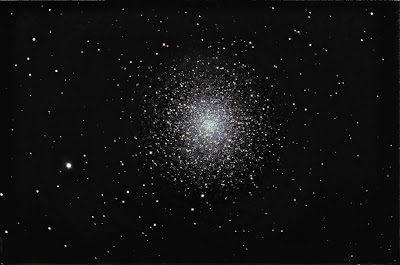
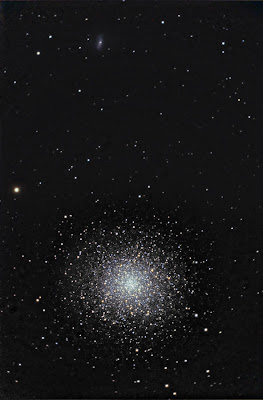
Tuesday, March 25, 2008
IC 1396 in Color
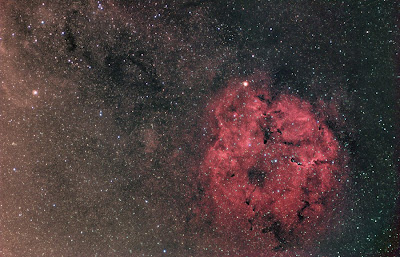
Sunday, January 20, 2008
Horsehead nebula

Thursday, November 6, 2008
The California Nebula, NGC1499
 S-II, H-a and O-III composition, Hubble palette
S-II, H-a and O-III composition, Hubble palette 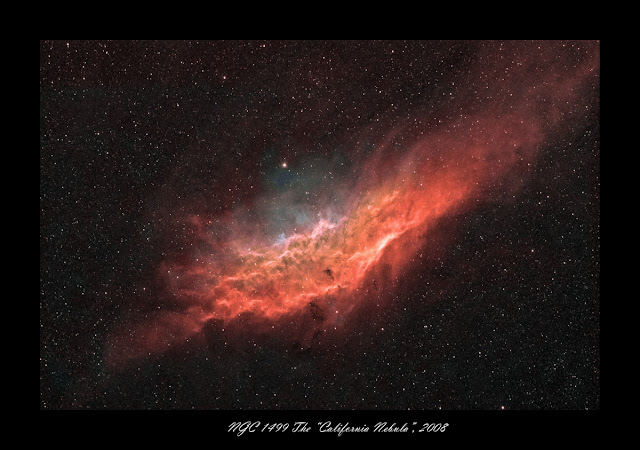 H-a+35%S-II, O-III and O-III+30%H-a, "Natural color" composition
H-a+35%S-II, O-III and O-III+30%H-a, "Natural color" composition 
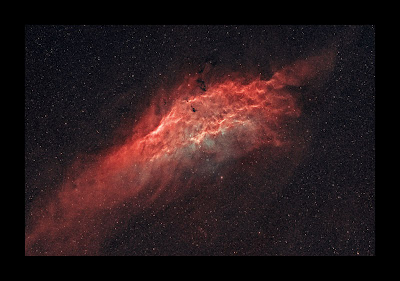
Sunday, January 13, 2008
Narrow Band with UHC-s and H-alpha????
 As you can see there is spike at about 500 nm containing both O-III and H-Beta, In singleshot camera those bands are ending up partly to Green and Blue channels!!!There is lots of H-alpha as well, but we are not interested about that, becouse we have separate 7nm H-a filter data. So this is a background and here are few samples what can be archived with that data.
As you can see there is spike at about 500 nm containing both O-III and H-Beta, In singleshot camera those bands are ending up partly to Green and Blue channels!!!There is lots of H-alpha as well, but we are not interested about that, becouse we have separate 7nm H-a filter data. So this is a background and here are few samples what can be archived with that data.
This is a very first test run and there is lots of things to test, but it looks promicing so far.
All images have been taken with QHY8, a sigle shot cooled 6mb astro camera.
 original H-alpha 16 x900s + 5 x 1800s light frames used.
Total exposuretime about 6,5 hours.
LX200 GPS 12" f6.3 + SXV-AO (Active Optics system) Elephants trunk nebula in IC 1396
original H-alpha 16 x900s + 5 x 1800s light frames used.
Total exposuretime about 6,5 hours.
LX200 GPS 12" f6.3 + SXV-AO (Active Optics system) Elephants trunk nebula in IC 1396
 This is pure RGB data with Baader UHC-filter 5x900s
This is pure RGB data with Baader UHC-filter 5x900s
 Final RGB image, combined from previous images.
Final RGB image, combined from previous images.
Lights: 5x1800s + 15x900s @H-alpha Color data: 5x900s UHC-s filter combined as HaR(Ha)GB
 Hubble palette test from the same original data RGB > BRG and some color balancing
Hubble palette test from the same original data RGB > BRG and some color balancing
 Modified palette test from the same original data
Modified palette test from the same original data
Here is the same method used for the Bubble nebula image
Exposure time is 4h for H-a and 2h with UHC-s filter for RGB.
HaR(Ha)GB image is combined from the data.
 Modified Hubble palette from the same material as the original RGB
Modified Hubble palette from the same material as the original RGB
 Palette variation from the same data
Palette variation from the same data
I hope, that someone else will test this method and report here about findings.
All comments and opinions are welcome.
Monday, March 30, 2009
M45 as a Stereo Pair
 Parallel Vision
Parallel Vision  Cross Vision - -
Cross Vision - - Thursday, October 2, 2008
Veil Nebula in O-III light

Wednesday, July 16, 2008
Veil Nebula, Western part (reprocessed)

Monday, November 3, 2008
NGC6888, the "Crescent Nebula"
 NGC6888 in Hubble palette
NGC6888 in Hubble palette  "natural" color version
"natural" color version  H-alpha channel
H-alpha channel 
Sunday, June 12, 2011
Butterfly Nebula, apparent scale in the sky
It was my very first APOD (Astronomy Picture Of Day) published by NASA.
http://astroanarchy.blogspot.com/2008/11/apod.html
Monday, December 31, 2007
SXV-AO, Active Optics sytem first light
 Comparison image of AO and no AO system.
Comparison image of AO and no AO system.  Image of the AO-unit, from the telescope side
Image of the AO-unit, from the telescope side
 Assembly
http://www.starlight-xpress.co.uk/SXV-AO.htm
Assembly
http://www.starlight-xpress.co.uk/SXV-AO.htm Monday, October 27, 2008
Sh2-155, The Cave Nebula
 "natural" color version
"natural" color version
 H-alpha
H-alpha


















